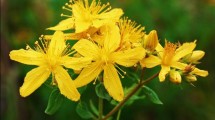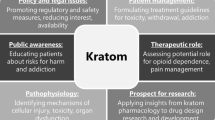Abstract
This study aimed to evaluate the antinociceptive effect of sulphated polysaccharide from the marine algae Hypnea pseudomusciformis (PLS) using rodent models of orofacial pain. Acute pain was induced by formalin, capsaicin, cinnamaldehyde, acidified saline or glutamate (cutaneous modes) and hypertonic saline (corneal model). In one experiment, animals were pretreated with ruthenium red, glibenclamide, naloxone, L-NAME, methylene blue or ketamine to investigate the mechanism of antinociception. In another experiment, animals pretreated with PLS or saline were submitted to the temporomandibular joint formalin test. In yet another, animals were submitted to craniofacial pain induced by mustard oil. Motor activity was evaluated with the open-field test. Cytotoxicity and antioxidant activities were also assessed. Pre-treatment with PLS significantly reduced nociceptive behavior associated with acute pain. Antinociception was effectively reduced, but not inhibited, by ruthenium red and ketamine. L-NAME and glibenclamide enhanced the PLS effect. PLS antinociception was resistant to methylene blue, naloxone and heating. PLS presented no cytotoxicity or antioxidant properties. Our results confirm the potential pharmacological relevance of PLS as an inhibitor of orofacial nociception in acute pain probably mediated by glutamatergic, nitrergic, TRPs and K + ATP pathways.


Similar content being viewed by others
References
Ahmed AB, Adel M, Karimi P, Peidayesh M (2014) Pharmaceutical, cosmeceutical, and traditional applications of marine carbohydrates. Adv Food Nutr Res 73:197–220
Araújo IW, Rodrigues JA, Quinderé AL, Silva JF, Maciel GF, Ribeiro NA, Sousa OVE, Ribeiro KA, Chaves HV, Pereira KM, Bezerra MM, Benevides NM (2016) Analgesic and anti-inflammatory actions on bradykinin route of a polysulfated fraction from alga Ulva lactuca. Int J Biol Macromol 92:820–830
Araújo IW, Chaves HV, Pachêco JM, Val DR, Vieira LV, Santos R, Freitas RS, Rivanor RL, Monteiro VS, Clemente-Napimoga JT, Bezerra MM, Benevides NM (2017) Role of central opioid on the antinociceptive effect of sulfated polysaccharide from the red seaweed Solieria filiformis in induced temporomandibular joint pain. Int Immunopharmacol 44:160–167
Badrinathan S, Shiju TM, Sharon CAS, Arya R, Pragasam V (2012) Purification and structural characterization of sulfated polysaccharide from Sargassum myriocystum and its efficacy in scavenging free radicals. Indian J Pharm Sci 74(6):549–555
Baggio CH, Freitas CS, Marcon R, Werner MF, Rae GA, Smiderle FR, Sassaki GL, Iacomini M, Marques MC, Santos AR (2012) Antinociception of β-d-glucan from Pleurotus pulmonarius is possibly related to protein kinase C inhibition. Int J Biol Macromol 50(3):872–877
Baraldi PG, Preti D, Materazzi S, Geppetti P (2010) Transient receptor potential ankyrin 1 (TRPA1) channel as emerging target for novel analgesics and anti-inflammatory agents. J Med Chem 53(14):5085–5107
Brito TV, Prudêncio RS, Sales AB, Vieira FD Jr, Candeira SJ, Franco AX, Aragão KS, Ribeiro RA, Souza MHP, Chaves LS, Freitas AL, Medeiros JV, Barbosa ALR (2013) Anti-inflammatory effect of a sulphated polysaccharide fraction extracted from the red algae Hypnea musciformis via the suppression of neutrophil migration by the nitric oxide signalling pathway. J Pharm Pharmacol 65(5):724–733
Brito TV, Barros FC, Silva RO, Dias Júnior GJ, Júnior JSC, Franco AX, Soares PM, Chaves LS, Abreu CM, de Paula RC, Souza MH, Freitas AL, Barbosa ALR (2016) Sulfated polysaccharide from the marine algae Hypnea musciformis inhibits TNBS-induced intestinal damage in rats. Carbohydr Polym 151:957–964
Capaz FR, Vanconcellos LE, De Moraes S, Neto JP (1981) The open field: a simple method to show ethanol withdrawal symptoms. Arch Int Pharmacodyn Ther 251(2):228–236
Carneiro JG, Holanda TBL, Quinderé ALG, Frota AF, Soares VVM, Sousa RS, Carneiro MA, Martins DS, Gomes Duarte AS, Benevides NMB (2018) Gastroprotective Effects of Sulphated Polysaccharides from the Alga Caulerpa mexicana reducing ethanol-induced gastric damage. Pharmaceuticals 11(1) (pii: E6)
Damasceno SRB, Rodrigues JC, Silva RO, Nicolau LAD, Chaves LS, Freitas ALP, Souza MHLP, Barbosa ALR, Medeiros JVR (2013) Role of the NO/KATP pathway in the protective effect of a sulfated-polysaccharide fraction from the algae Hypnea musciformis against ethanol-induced gastric damage in mice. Rev Bras Farmacog 23:320–328
Dyshlovoy SA, Honecker F (2018) Marine compounds and cancer: 2017 updates. Mar Drugs 24:16(2)
Farazifard R, Safarpour F, Sheibani V, Javan M (2005) Eye-wiping test: a sensitive animal model for acute trigeminal pain studies. Brain Res Brain Res Protoc 6(1–3):44–49
Farias WRL, Valente AP, Pereira MS, Mourão PAS (2000) Structure and anticoagulant activity of sulfated galactans: isolation of a unique sulfated galactan from the red algae Botryocladia occidentalis and comparison of its anticoagulant action with that of sulfated galactans from invertebrates. J Biol Chem 275:29299–29307
Fiorentino PM, Cairns BE, Hu JW (1999) Development of inflammation after application of mustard oil or glutamate to the rat temporomandibular joint. Arch Oral Biol 44(1):27–32
Fu H, Fang P, Zhou HY, Zhou J, Yu XW, Ni M, Zheng JY, Jin Y, Chen JG, Wang F, Hu ZL (2016) Acid-sensing ion channels in trigeminal ganglion neurons innervating the orofacial region contribute to orofacial inflammatory pain. Clin Exp Pharmacol Physiol 43(2):193–202
He J, Xu Y, Chen H, Sun P (2016) Extraction, structural characterization, and potential antioxidant activity of the polysaccharides from four seaweeds. Int J Mol Sci 17:12
Hidalgo PSP, Nunomura RDCS, Nunomura SM (2016) Amazon oilseeds: chemistry and antioxidant activity of patawa (Oenocarpus bataua Mart.). Rev Virtual Quim 8(1):130–140
Ivanusic JJ, Beaini D, Hatch RJ, Staikopoulos V, Sessle BJ, Jennings EA (2011) Peripheral N-methyl-d-aspartate receptors contribute to mechanical hypersensitivity in a rat model of inflammatory temporomandibular joint pain. Eur J Pain 15(2):179–185
Lambert D (2009) Capsaicin receptor antagonists: a promising new addition to the pain clinic. Br J Anaesth 102:153–155
Luccarini P, Childeric A, Gaydier AM, Voisin D, Dallel R (2006) The orofacial formalin test in the mouse: a behavioral model for studying physiology and modulation of trigeminal nociception. J Pain 7(12):908–914
Malve H (2016) Exploring the ocean for new drug developments: marine pharmacology. J Pharm Bioallied Sci 8(2):83–91
McNamara CR, Mandel-Brehm J, Bautista DM, Siemens J, Deranian KL, Zhao M, Hayward NJ, Chong JA, Julius D, Moran MM, Fanger CM (2007) TRPA1 mediates formalin-induced pain. PNAS 104(33):13525–13530
Medvedeva YV, Kim MS, Usachev YM (2008) Mechanisms of prolonged presynaptic Ca2+ signaling and glutamate release induced by TRPV1 activation in rat sensory neurons. J Neurosci 8(20):5295–5311
Meyer BN, Ferrigni NR, Putnam JE, Jacobsen LB, Nichols DE, McLaughlin JL (1982) Brine shrimp: a convenient general bioassay for active plant constituents. Planta Med 5:31–34
Milhome CP (2014) Atividade antinociceptiva de polissacarídeos sulfatados extraídos da macroalga marinha vermelha Hypnea musciformis. Universidade Federal do Ceará, Fortaleza
Mosmann T (1983) Rapid colorimetric assay for cellular growth and survival: application to proliferation and cytotoxicity assays. J Immunol Methods 65(1–2):55–63
Nauer F, Cassiano V, Oliveria MC (2015) Description of Hypnea pseudomusciformis sp. nov., a new species based on molecular and morphological analyses, in the context of the H. musciformis complex (Gigartinales, Rhodophyta). J Appl Phycol 27(6):2405–2417
Neelakandan Y, Venkatesan A (2016) Antinociceptive and anti-inflammatory effect of sulfated polysaccharide fractions from Sargassum wightii and Halophila ovalis in male Wistar rats. Ind J Pharmacol 48(5):562–570
Newman DJ, Cragg GM (2014) Marine-sourced anti-cancer and cancer pain control agents in clinical and late preclinical development. Mar Drugs 2(1):255–278
Nomura EC, Rodrigues MR, da Silva CF, Hamm LA, Nascimento AM, de Souza LM, Cipriani TR, Baggio CH, Werner MF (2013) Antinociceptive effects of ethanolic extract from the flowers of Acmella oleracea (L.) R.K. Jansen in mice. J Ethnopharmacol 150(2):583–589
Pan Z, Wang Z, Yang H, Zhang F, Reinach PS (2011) TRPV1 activation is required for hypertonicity-stimulated inflammatory cytokine release in human corneal epithelial cells. IOVS 52(1):485–493
Quintans-Júnior LJ, Melo MS, De Sousa DP, Araújo AA, Onofre AC, Gelain DP, Gonçalves JC, Araújo DA, Almeida JR, Bonjardim LR (2010) Antinociceptive effects of citronellal in formalin-, capsaicin-, and glutamate-induced orofacial nociception in rodents and its action on nerve excitability. J Orofac Pain 24(3):305–312
Raboisson P, Dallel R (2004) The orofacial formalin test. Neurosci Biobehav Ver 28(2):219–226
Reis RP, Yoneshigue-Valentin Y, Santos CP (2008) Spatial and temporal variation of Hypnea musciformis carrageenan (Rhodophyta-Gigartinales) from natural beds in Rio de Janeiro State, Brazil. J Appl Phycol 20(1):1–8
Ribeiro NA, Abreu TM, Chaves HV, Bezerra MM, Monteiro HS, Jorge RJ, Benevides NM (2014) Sulfated polysaccharides isolated from the green seaweed Caulerpa racemosa plays antinociceptive and anti-inflammatory activities in a way dependent on HO-1 pathway activation. Inflam Res. 63(7):569–580
Rios ER, Rocha NF, Carvalho AM, Vasconcelos LF, Dias ML, de Sousa DP, de Sousa FC, Fonteles MM (2013) TRP and ASIC channels mediate the antinociceptive effect of citronellyl acetate. Chem Biol Interact 203(3):573–579
Ro JY, Capra N, Masri R (2003) Development of a behavioral assessment of craniofacial muscle pain in lightly anesthetized rats. Pain 04(1–2):179–185
Rodrigues JAG, Paula GA, Benevides NMB, Quinderé ALG, Araújo IWF, Façanha EF, Vanderlei ESO, Queiroz INL, Lima TB, Coura CO (2011) Isolation, fractionation and in vivo toxicological evaluation of sulfated polysaccharide from Hypnea musciformis. Ciência Rural 41(7):1211–1217
Roveroni RC, Parada CA, Cecília M, Veiga FA, Tambeli CH (2001) Development of a behavioral model of TMJ pain in rats: the TMJ formalin test. Pain 94(2):185–191
Saunders GW, Chiovitti A, Kraft GT (2004) Small-subunit rDNA sequences from representatives of selected families of the Gigartinales and Rhodymeniales (Rhodophyta). 3. Delineating the Gigartinales sensu stricto. Can J Bot 82(1):43–74
Sousa NA, Barros FC, Araújo TS, Costa DS, Souza LK, Sousa FB, Leódido AC, Pacífico DM, Araújo S, Bezerra FF, Freitas AL, Medeiros JV (2016) The efficacy of a sulphated polysaccharide fraction from Hypnea musciformis against diarrhea in rodents. Int J Biol Macromol 86:865–875
Suffness M, Pezzuto JM (1990) Assays related to cancer drugdiscovery. In: Hostettmann K (ed) Methods in plant biochemistry: assays for bioactivity, vol 6. Academic Press, London, pp 71–133
Viera-Júnior FC, Barbosa ALR (2012) Avaliação do potencial antinociceptivo de uma galactana sulfatada extraída de Gracilaria caudata em camundongos - possível participação da via NO/cGMP/PKG/K+ATP. In: XXI Seminário de Iniciação Científica, Universidade Federal do Piauí, Teresina, p. 1-7.
Villacorte LO, Ekowati Y, Winters H, Amy G, Schippers JC, Kennedy MD (2015) MF/UF rejection and fouling potential of algal organic matter from bloom-forming marine and freshwater algae. Desalination 367:1–10
Xu SY, Huang X, Cheong KL (2017) Recent advances in marine algae polysaccharides: isolation, structure, and activities. Mar Drugs 15(12) (pii:E388)
Acknowledgements
The authors would like to thank CNPq, Funcap and Capes for financial support and Fundação Edson Queiroz for infrastructure.
Author information
Authors and Affiliations
Corresponding author
Ethics declarations
Conflict of interest
No conflicts of interests have been identified for the present study.
Rights and permissions
About this article
Cite this article
Souza, C.Á.P.B., de Oliveira, B.A., Santos, S.A.A.R. et al. Orofacial antinociceptive effect of sulphated polysaccharide from the marine algae Hypnea pseudomusciformis in rodents. Inflammopharmacol 27, 261–269 (2019). https://doi.org/10.1007/s10787-018-0454-4
Received:
Accepted:
Published:
Issue Date:
DOI: https://doi.org/10.1007/s10787-018-0454-4




